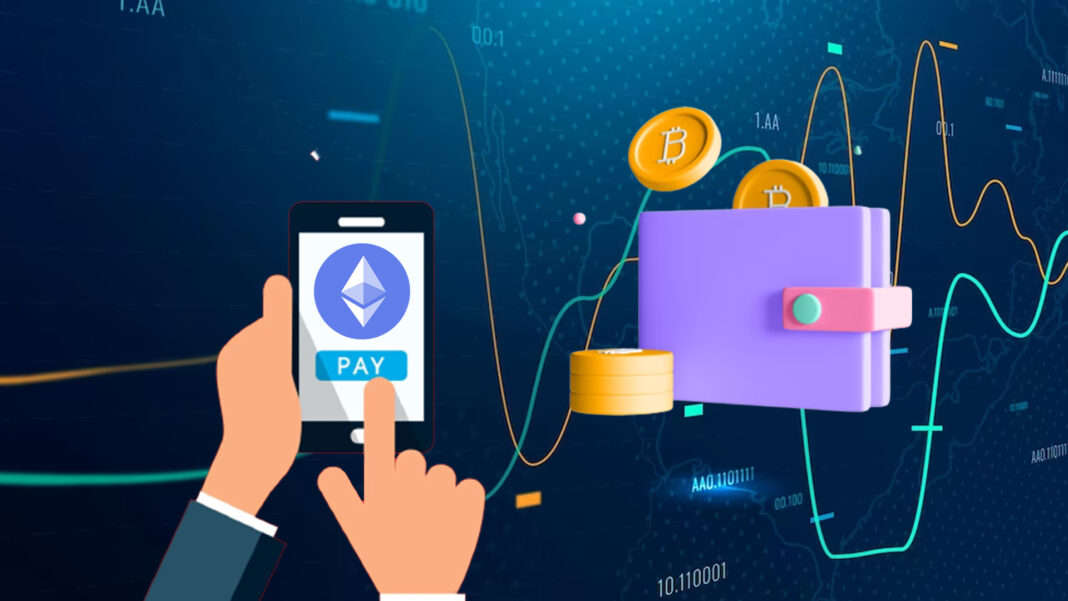- Ethereum transactions are verified by signatures, which further create a hash.
- Blockchains like Ethereum depend on proof-of-stake consensus, which makes them slow and time-consuming.
Ethereum transactions help to change the state of a network. Smart contract based blockchain ecosystems have a variety of elements. The Ethereum Virtual Machine (EVM) is one of the computation methods able to run smart contracts, a set of conditions that work as a network’s backbone. Things go wrong for various reasons, like slippage and low-gas. This leads to a delayed or failed transaction.
Introducing Ethereum Transactions
Ethereum, being a decentralized blockchain, helps users with digital asset transactions. Every transaction on this network is recorded on the blockchain, which provides transparency and is easy-accessible. These transactions are verified by signing and further added to the blockchain with the help of its consensus mechanism. By validating these transactions, users of this network contribute to the network’s enhanced decentralization.
A transaction goes through a number of stages when it is made. The first step includes transaction details that consist of the sender’s Ethereum wallet address, the receiver’s wallet address, data required for smart contract execution and the amount of Ethereum (ETH) an individual wants to send.
After completion of this stage, a transaction is created, which needs to be signed with the help of a private key to ensure its security and legitimacy. A change in the state of the EVM because of this transaction, needs to be broadcast to the blockchain network. Further, it awaits a validator in mempool to execute transactions and add it to the block with the resulting changes to the network.
Components of a Transaction
Here we have mentioned the key elements of a transaction made on Ethereum.
- Sender and Receiver Address
These addresses are a set of alphanumeric keys that determine the wallet addresses of the sender and the receiver as well. This is one of the key components of the transaction process.
- Gas Limit
On the Ethereum blockchain, gas determines the processing efforts that need to be completed for the execution of a transaction or smart contract. The amount of gas that can be used to execute a transaction is computed by the gas limit.
- Gas Fees
This fee is paid by the sender in order to encourage miners for participation in a transaction. High gas fees lead to faster transaction execution.
- Status
This helps to check whether a transaction is pending, successful, or failed. Checking the status helps you monitor a transaction, whether it is successful or has issues.
- Transaction Hash
This is a unique identifier connected to each Ethereum transaction made on the network. It works as a digital footprint, which is further used to check a transaction’s status.
Reasons for a Failed Transaction
Among Several reasons for a failed transaction, two major reasons are mentioned below:
- Low gas fees
Most of the transactions failed because they did not pay enough for gas. This leads to less effort and encouragement among miners. This could be resolved by paying enough gas fees in the first place. Users can check the current price while selecting a preferred gas amount. This proves to be helpful in a situation where gas prices are getting higher. These features help to amplify the speed by adding more gas to your transaction economically.
- DEX Rejected Transaction
Failed transactions mostly happen at the automated market maker (AMM) or decentralized exchange (DEX) level. Multiple transactions execute at once and the contract denies the transaction. Assumed to be a gas issue, but sometimes it occurs as a slippage issue. This takes place when there isn’t enough liquidity to fill at a certain demand price and due to that, the exchange rejects the transaction and it fails. It can be resolved by Adjusting or increasing slippage tolerance in the settings of a platform.
Conclusion
Transactions mostly fail during periods of volatility and it may cost you a big loss sometimes. In case a transaction is slowed down or in pending status for a while, users must try again with increased gas fees and adjusted slippage. This adjustment can be done via a feature that is available in the platform’s setting options.




